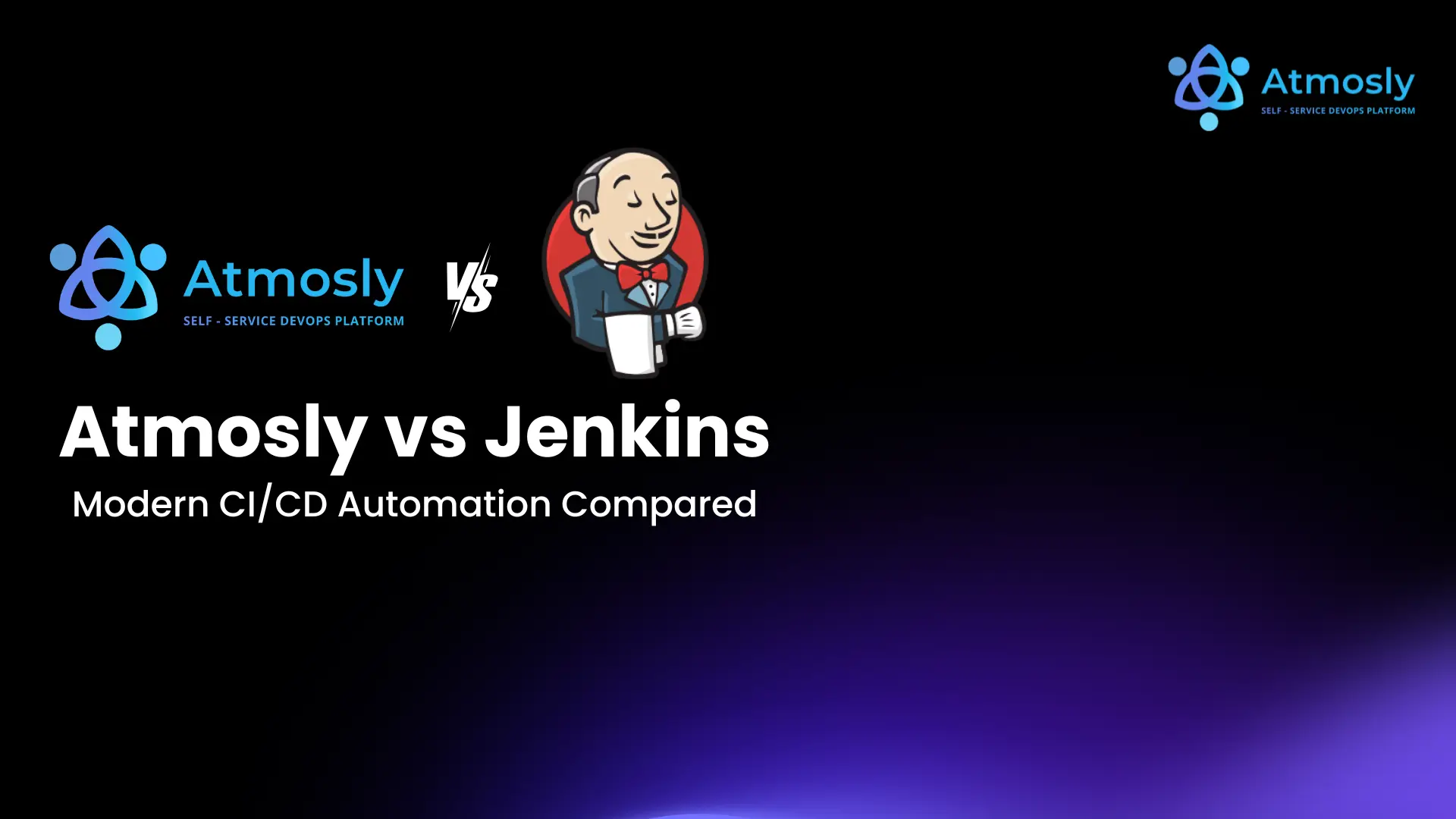Jenkins has long been the default CI/CD tool for engineering teams. Open-source, highly customizable, and community-driven it powered the early DevOps revolution. But in 2025, the demands of cloud-native, GitOps-first development have evolved.
Enter Atmosly: a modern DevOps automation platform built for developer velocity, infrastructure scalability, and self-service environments. It eliminates the plugin chaos, YAML sprawl, and infrastructure guesswork that often plague Jenkins setups.
If you're considering upgrading from Jenkins or choosing the right CI/CD tool for your next project this side-by-side comparison of Atmosly vs Jenkins will help.
Overview: Atmosly vs Jenkins
| Feature | Jenkins | Atmosly |
|---|---|---|
| Deployment Model | Self-hosted | Cloud-native (SaaS or hybrid) |
| Pipeline Definition | Jenkinsfile (YAML/DSL + plugins) | GitOps templates + UI workflows |
| Secrets Management | External (Vault, plugins) | Built-in secrets engine with RBAC |
| Environment Provisioning | Manual or scripted | Ephemeral & persistent, on demand |
| GitOps Support | Limited, manual plugins | Native GitOps with drift detection |
| Developer Experience (DevEx) | Complex UI, steep learning curve | Clean UI, golden path templates |
| Security & Compliance | Depends on manual configuration | Policy-driven, secure by default |
| Best For | Legacy systems, plugin-heavy setups | Scalable teams, modern DevOps orgs |
Atmosly: Designed for Modern DevOps Teams
Atmosly was built to simplify complex CI/CD pipelines with a GitOps-first approach and reusable automation. It’s ideal for teams that want to abstract infrastructure, reduce DevOps toil, and deliver faster with confidence.
Key Advantages:
- Git-native workflows: Trigger deployments via pull requests
- Built-in secrets manager with access policies
On-demand provisioning of environments for staging, QA, testing - Reusable templates for platform engineering teams
- Intuitive UI and CLI for fast onboarding
With Atmosly, developers can self-serve infrastructure without writing endless Jenkinsfiles or configuring brittle plugin chains.
Jenkins: Legacy Flexibility, Modern Friction
Jenkins is one of the most flexible CI/CD tools available. Its plugin ecosystem is massive, and with the right expertise, almost anything is possible. But that power comes at a cost: maintenance overhead, inconsistent UI/UX, and long onboarding curves.
Common Pain Points:
- Plugin maintenance and version conflicts
- Complex, nested pipeline logic in Jenkinsfiles
- Manual secrets/configuration management
- Limited visibility into deployments and drifts
- High barrier for onboarding new engineers
Jenkins remains popular in legacy-heavy orgs, but it struggles to keep up with the needs of dynamic teams deploying to Kubernetes, multi-cloud, or hybrid environments.
Developer Experience Comparison
| Area | Jenkins | Atmosly |
|---|---|---|
| Onboarding Time | High (manual config, plugins) | Low (templates + Git integration) |
| Pipeline Visibility | Basic | Full GitOps audit trails |
| Secrets Integration | Requires 3rd-party setup | Built-in with fine-grained RBAC |
| Workflow Customization | DSL-based scripting | UI + Git-based templates |
| CI/CD Debugging | Log-heavy, less contextual | Integrated insights and rollback |
Atmosly delivers a smoother, more intuitive experience—especially for teams adopting internal developer platforms (IDPs) or looking to scale DevOps enablement.
Use Case Fit
| Use Case | Recommended Tool |
|---|---|
| Legacy infrastructure, plugin reuse | Jenkins |
| Cloud-native microservices & GitOps delivery | Atmosly |
| Internal developer platform setup | Atmosly |
| Fast CI/CD onboarding for product teams | Atmosly |
| Custom, legacy scripting | Jenkins |
Final Verdict: Atmosly or Jenkins?
If your team values open-source extensibility and is deeply invested in legacy systems, Jenkins may still serve you.
But if you're building for speed, scale, and modern developer experience Atmosly offers a clear advantage with:
- GitOps-native CI/CD automation
- On-demand environment provisioning
- Secure, scalable infrastructure workflows
- Built-in secrets and compliance controls
- Faster onboarding and reduced DevOps overhead
Ready to Upgrade from Jenkins?
Atmosly helps you modernize your CI/CD with declarative pipelines, Git-native delivery, and developer-first automation.






